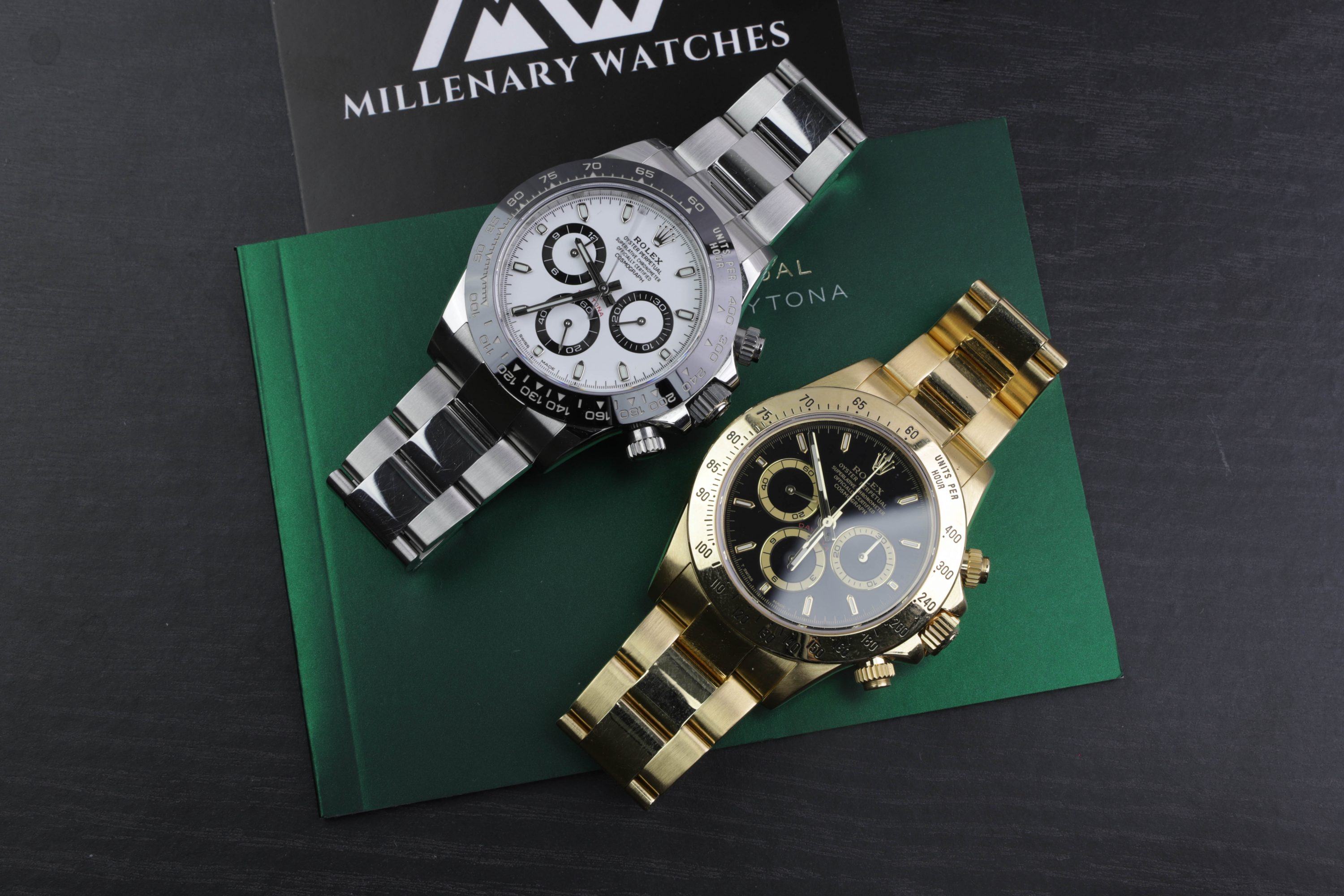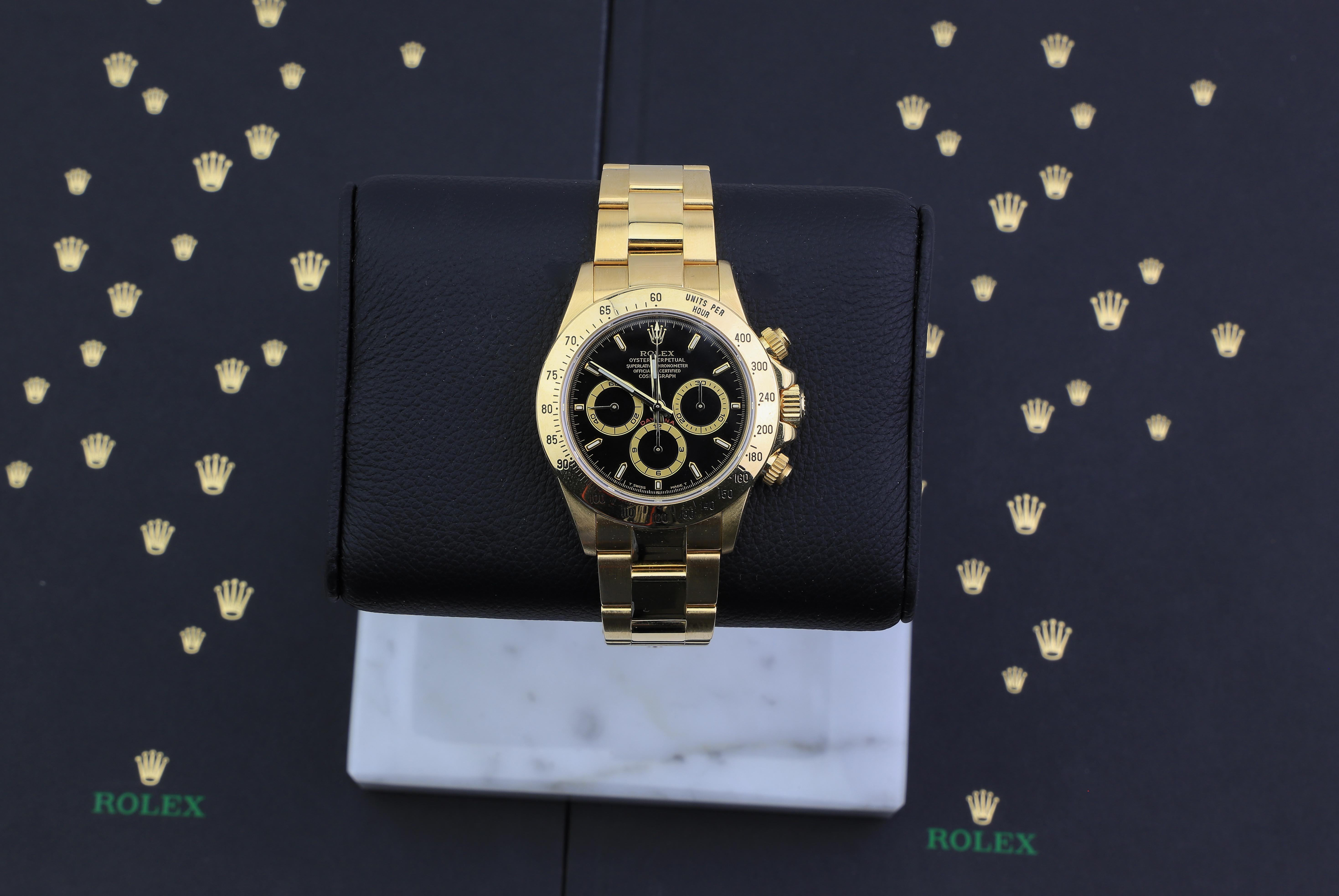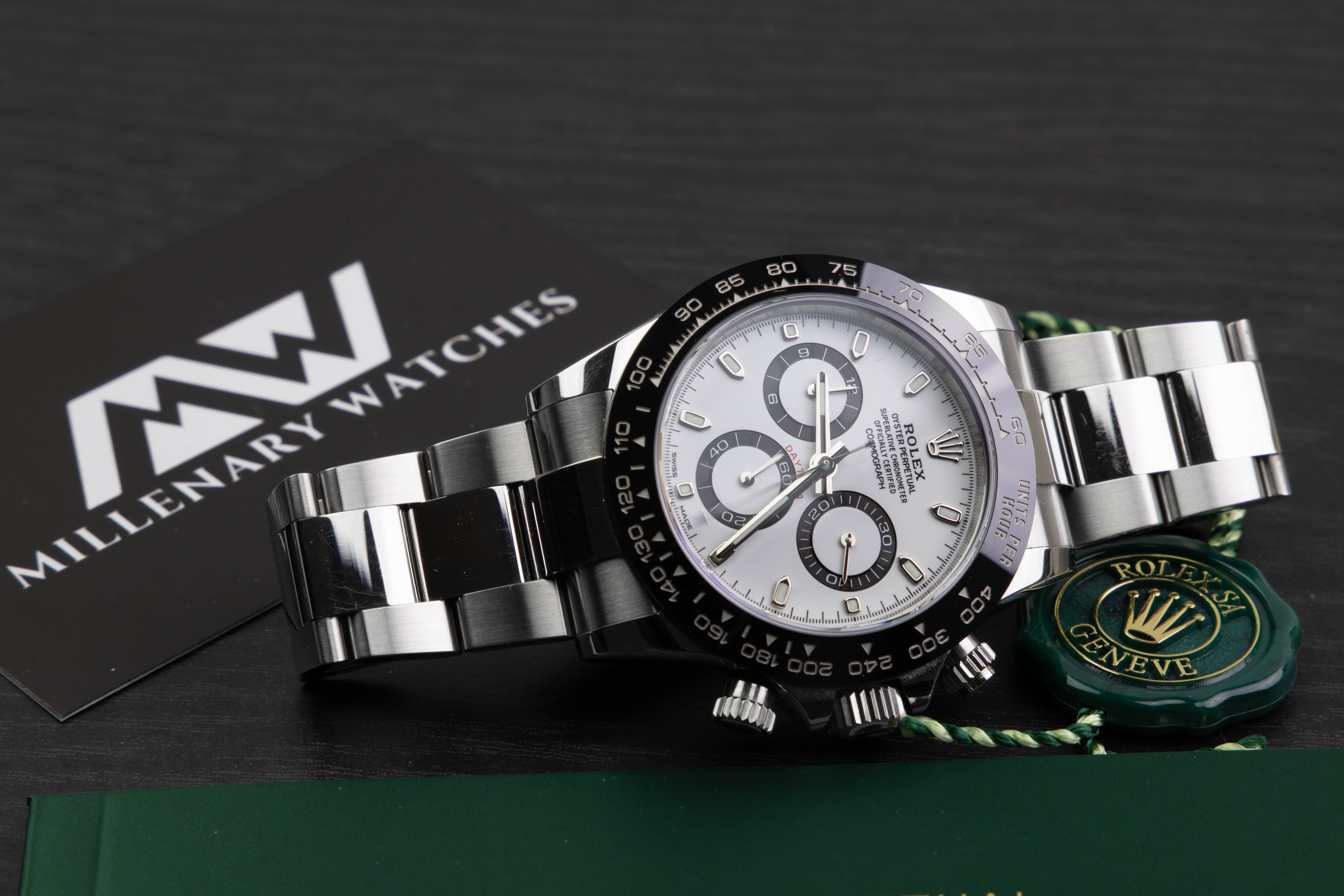
Rolex Daytona movement: Which movement does the Daytona have?
Over the years, Rolex has released a number of different Daytona references. With that said, they have not been powered by the same caliber. In this article, we’ll look at the Rolex chronographs (pre-Daytona) and the different Daytona generations, and which movements they used.
Which movement does the Daytona have?
Rolex chronograph reference 6234
The predecessor to the Rolex Daytona was released in 1955 and has the reference 6234. This reference was not labeled nor named Daytona, but the model does share a lot of similar design traits as the current Daytona. You may say that this is the seed to the Daytona we have today. The reference was discontinued in 1961.
This model wasn’t very successful and relatively few pieces were made (about 500). However, it was the beginning of the legendary Daytona that we have today.
The Rolex Chronograph reference 6234 is equipped with the Rolex Caliber 72. This is a manual mechanical movement with 17 jewels, a column-wheel construction, and a horizontal clutch. The movement is actually a Valjoux base.
Rolex chronograph 6240 caliber
In 1965, Rolex released the chronograph reference 6240. This was the first chronograph from Rolex to use screw-in push buttons. The screw-down pushers keep dust and water from entering the case.
This reference was produced from 1965 to 1969. Rolex made it as an experimental model.
The Rolex 6240 uses a modified Valjoux movement, of which Rolex increased the frequency from 18,000 to 21,600 VPH. For this reference, Rolex used three calibers – the calibers 72B, 722, and 722-1.
The caliber 72B was only used in 1965, the caliber 722 was used between about 1965 to 1968, and the caliber 722-1 was used approximately during the 2 last years of production.
Rolex Daytona ”Zenith” caliber 16520
Rolex released the watch that is today known as the ”Zenith Daytona” in 1988. The name gives it away, but the reason it is called ”Zenith Daytona” is due to the fact that it uses a Zenith movement. In this reference, Rolex used a self-winding chronograph caliber, based Zenith’s El Primero movement which was released in 1969.
The Zenith movement was heavily modified by Rolex, including reducing the frequency from 36,000 to 28,800 VPH. Reducing the frequency meant upping the power reserve and reducing the wear and friction of the movement, which leads to longer service intervals.
Since Rolex did such heavy modifications on this caliber, and to make it appear as an in-house Rolex movement, Rolex named the caliber 4030.

Rolex Daytona 116520 movement

In the year 2000, Rolex released its first fully in-house movement for the Daytona. This movement was presented in the new reference 116520 (including gold variants).
The caliber was named 4130, which is a natural name change from the 4030 to highlight that it is a new-generation movement. The caliber 4130 has a 72-hour power reserve, 44 jewels, vertical coupling, column wheel, and Kif shock absorbers for the balance and escape wheel.
Rolex Daytona 116500LN caliber

The new ceramic Daytona reference 116500LN was released in 2016 and is equipped with the same caliber as the previous generation Daytona. Rolex did simply not see a reason to upgrade or change the Daytona caliber 4130 just yet, and so continued on a winning concept.
Conclusion
As you can see, the Rolex Daytona (and its predecessors, pre-Daytona) have used a number of different calibers. The majority of these have been externally sourced movements, but the Rolex Daytona received a huge update when Rolex announced its first in-house chronograph movement 4130. This caliber is still used today, 20 years later, which goes to show that Rolex is perfectly satisfied with how the caliber performs and sees no reason to update it just yet.
Bear in mind that we have only listed the stainless steel Daytona variant under each title. Many of the Daytona generations were also made in gold and gold & steel variants.




